Yucca plants are well-known for their large, spiky leaves that cover long, thick woody stems. They are popular in gardens and can create a tropical feel, resembling palm trees. With nearly 50 different species, yuccas come in various forms as perennial evergreen shrubs and trees in the Asparagaceae plant family, though they are often confused with cacti.
Some yuccas can grow tall like trees, while others are shrubs. They have sword-like leaves that can range from green to bluish-green, with some types having yellow or white variegation. One of the most impressive features of yuccas is their large cluster of flowers, which can grow up to 12 feet (3.6 meters) tall and produce bell-shaped, creamy-white blooms.
Yucca plants prefer dry, sandy soil with lots of sunlight and well-draining soil, and can thrive in most types of soil as long as it is not too rich. While yuccas can be beautiful landscape plants, they should be planted in a secluded area due to their razor-sharp leaves.
Indoors, spineless or stick yuccas (Yucca elephantipes) are ideal as houseplants because they thrive in bright sunlight and typical room temperatures, and have soft broad leaves without sharp spines. However, it is uncommon for indoor potted yucca plant species to bloom.
Yucca plants have common names such as Adam’s Needle, Spanish Bayonet, Aloe Yucca, Needle Palm, and Narrowleaf Yucca, depending on their foliage type. To differentiate between the various yucca species, pictures, scientific names, and descriptions are useful tools.
Types of Yucca Plants (With Pictures)
To add to your garden landscape, here are some popular yucca plant types.
Adam’s Needle and Thread Yucca Plant (Yucca Filamentosa)
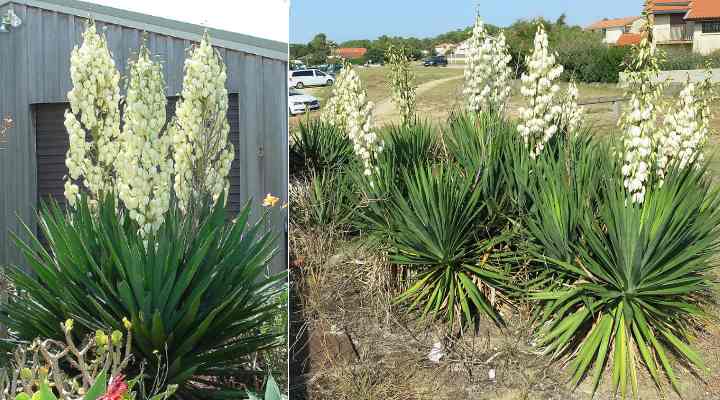
Yucca filamentosa is a type of flowering yucca that is distinguished by its white filaments that grow along the edges of its leaves. Its panicle, which is a branching inflorescence, can grow up to 8 feet (2.4 meters) tall and has a large cluster of white blooms. Yucca filamentosa can tolerate cold temperatures down to 5°F (-15°C) and grows well in USDA zones 4 through 11.
Adam’s needle, also known as the common yucca or thread yucca, is a popular evergreen landscape plant. Its sword-shaped green leaves can grow up to 3 feet (1 meter) tall, forming a clump of sharp foliage up to 3 feet (1 meter) in size. The thread-like filaments that grow along the edges of its leaves are a distinctive feature of this yucca plant, hence its common names “needle and thread yucca” and “filamentosa.”
Adam’s Needle ‘Color Guard’ (Yucca filamentosa ’Color Guard’)

Yucca filamentosa ‘Color Guard’ is a beautiful yucca variety with green and yellow variegated leaves. The curly filaments on the leaves turn pink and rose-colored during winter, adding to its ornamental appeal. This clumping shrub grows up to 2 to 3 feet (0.6 to 1 m) tall and wide and produces a large cluster of delicate white blooms on a tall stalk in mid-June.
This variegated Adam’s needle and thread yucca thrives in sandy soil and can be used as a garden barrier due to its sharp leaves. It’s an excellent plant for keeping animals and intruders at bay.
Adam’s Needle ‘Excalibur’ (Yucca filamentosa ‘Excalibur’)
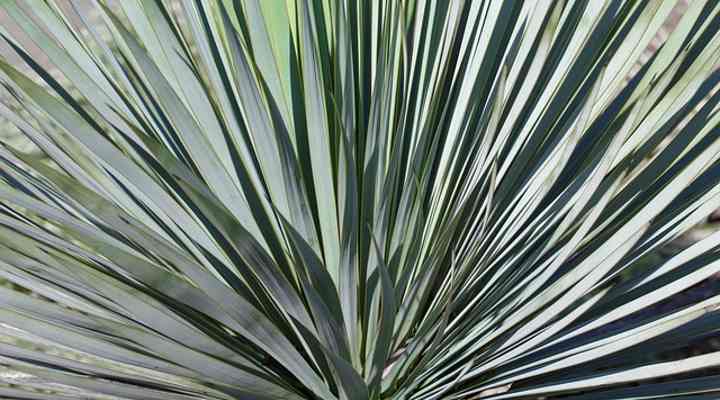
The decorative bluish silvery green leaves of Yucca filamentosa ‘Excalibur’ The shrub has tough, sword-shaped leaves that are blue-green to gray-green in color and is also known as the thready yucca. Curly filaments growing amid the foliage are visible in photographs of this yucca cultivar.
Adam’s needle yucca produces a huge cluster of bell-shaped creamy-white blooms during the summer. On the summit of a 5-foot (1.5 meter) towering flowering stalk, this cluster sits proudly. Plant this yucca in the location of your choice, where it will make a dramatic impact. Ideal for growing in USDA zones 5 through 10.
Spineless Yucca Plant (Yucca Elephantipes)
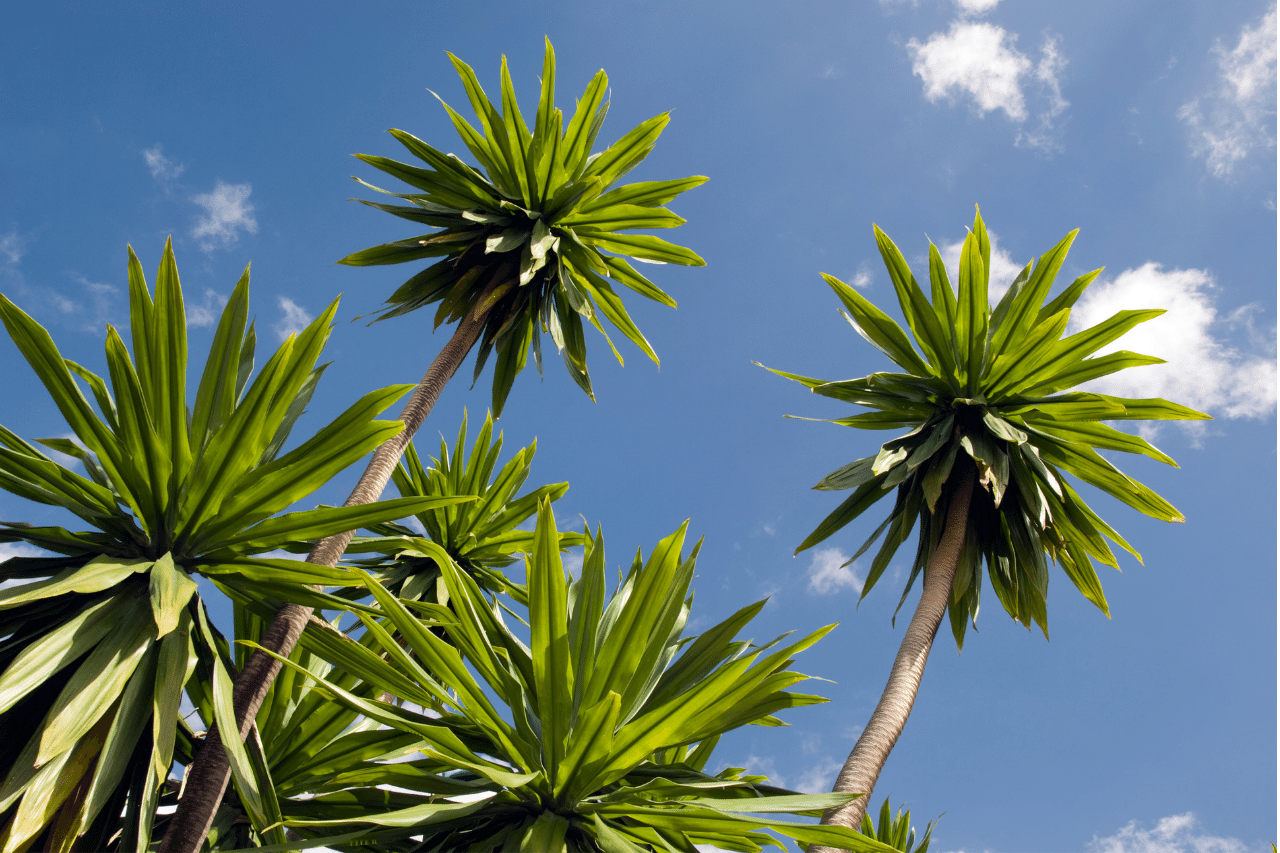
The leaves on the spineless yucca are not sharp, so it can be grown indoors as a houseplant. The lack of sharp spines on the leaves gives it its popular name. The thick leathery evergreen leaves of the yucca plant resemble an elephant’s foot as it grows older, earning it the name ‘elephantipes.’ The yucca tree resembles a tropical palm tree because of the spiral rosette pattern of its leaves. The hardy yucca plant grows to 30 feet (9 meters) tall in the garden landscape.
One of the few yucca species suitable for indoor cultivation is spineless yuccas. Spineless yuccas only grow to be about 5 feet (1.5 meters) tall indoors. This tall indoor plant, however, takes many years to reach its full height due to its sluggish growth.
Spanish Bayonet (Yucca Aloifolia)
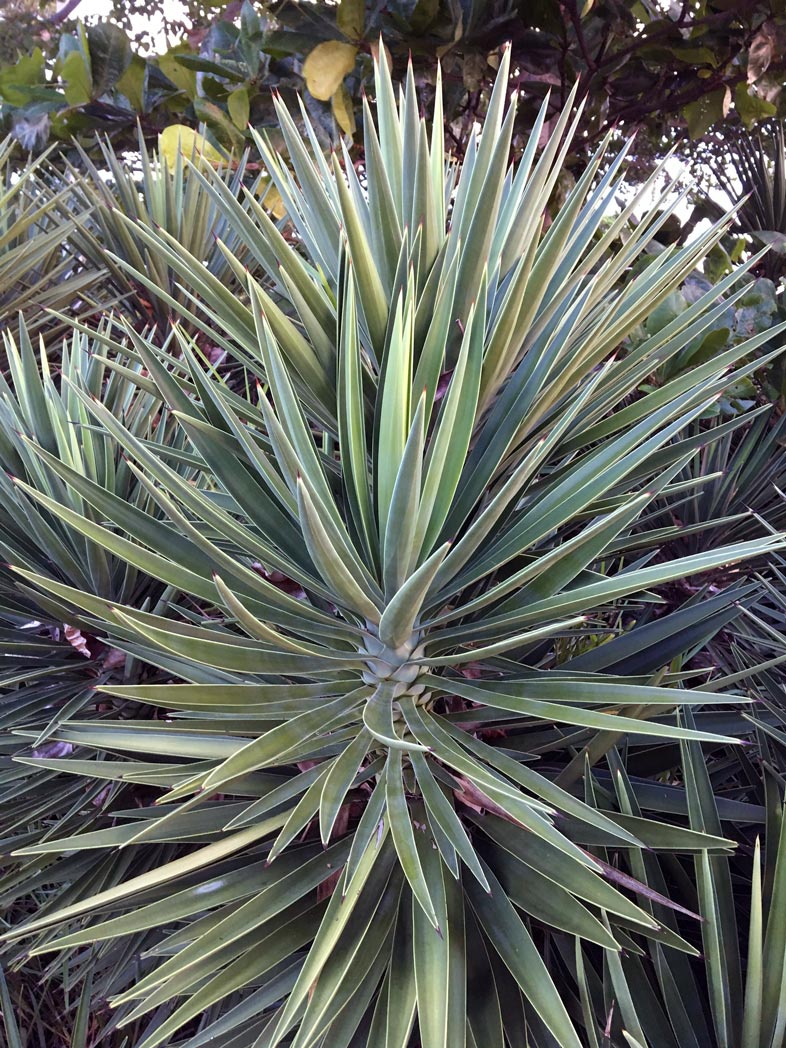
Yucca aloifolia is a versatile plant that can be grown both indoors and outdoors. It is commonly known as the Spanish bayonet or Spanish dagger, and is a multi-stemmed yucca species that adds a touch of tropical beauty to any setting. The leaves are sword-shaped and stiff, with sharp serration along the edges and a pointed tip, resembling actual swords. White flowers bloom on 2-foot (0.6 meter) flowering stems.
The Spanish bayonet yucca can grow up to 10 feet (3 meters) tall, resembling a tall shrub or small tree with dense crowns of spike-like leaves. It is an excellent choice for arid tropical environments and complements other tropical species. USDA zones 7 through 11 are ideal for this yucca species. It is also a great indoor plant option, as it can grow into a palm-like tropical plant.
Weak-Leaf Yucca Plant (Yucca flaccida)
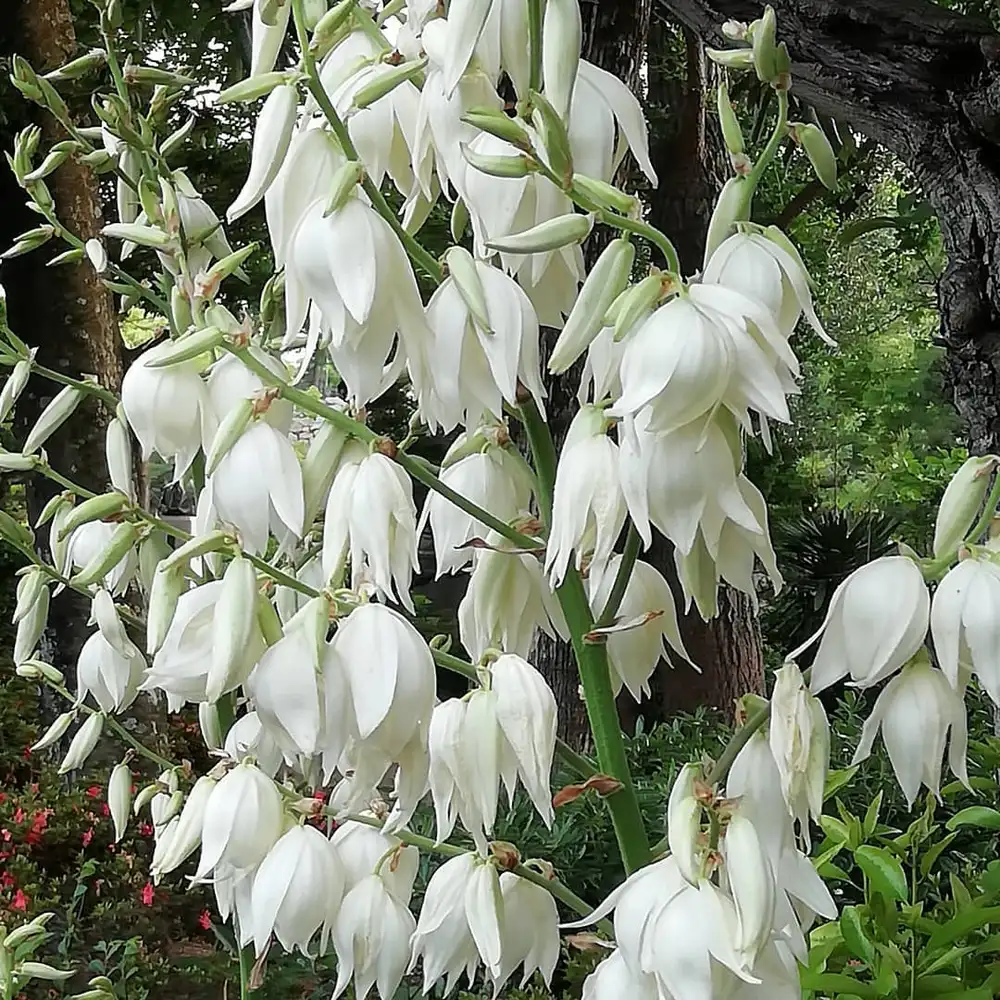
Yucca flaccida stands out from other yucca species due to its sword-shaped leaves. This evergreen shrub is short and wide, spreading up to 5 feet (1.5 meters) but growing only up to 2 feet (60 cm) tall. Its pointed-tip leaves are the identifying feature of this plant, much like many other yuccas.
Adam’s needle is the common name of this yucca plant, which is related to Yucca filamentosa in terms of botany. The yucca produces a clump of bell-shaped white blooms at the end of its lengthy stems when it flowers. The ‘Garland Gold’ or ‘Golden Sword’ is a remarkable cultivar of this yucca with stunning yellow and green leaves.
Spanish Dagger (Yucca gloriosa)

Yucca gloriosa is a stunning plant that flourishes in warm climates with sandy soil. It is commonly multi-stemmed and has sword-like dark green leaves that are narrow. The plant can grow up to 8 feet tall, and its panicle is tall (2.5 m), producing white blooms with a purple-red hue.
Yucca gloriosa has several cultivars, including ‘Variegata’ and ‘Bright Star.’ Yucca gloriosa ‘Bright Star’ is an attractive decorative shrub with vividly colored green leaves bordered by yellow. The pointy leaves are stiff and can reach a height of 2–4 feet (0.6–1.2 meters), forming a rosette pattern.
‘Bright Star’ yucca thrives in sandy, well-draining soil and requires full sun. It is cold hardy down to 0°F (-17°C) and grows well in USDA zones 7 – 11. The plant has spiky yellowish leaves, and the leaves turn a delicate reddish-pink color when the temperature drops.
Red Yucca Plant (Hesperaloe parviflora)
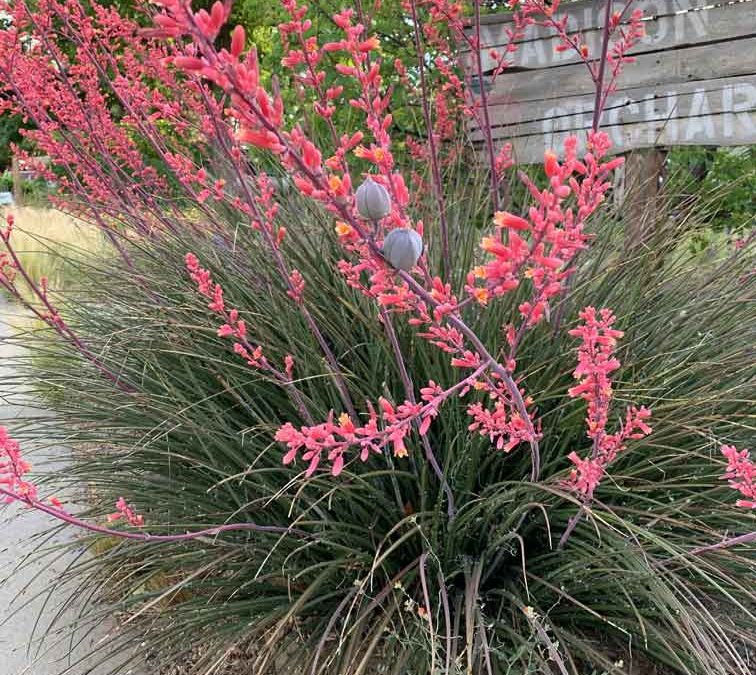
The red yucca (Hesperaloe parviflora) is not a true yucca plant, but it resembles one with its grass-like leaves that turn pinkish in the winter. The plant has slender, tall spikes of flowers and the leaves grow in a rosette pattern without spines. The plant is called red yucca because its bluish-green leaves turn reddish-bronze in the winter. The red yucca plant produces small bell-shaped flowers in crimson or dark pink on tall 5-foot (1.5-meter) stems, which is similar to many yucca plants.
This bushy shrub is drought tolerant and can be grown in borders, pots, and Mediterranean gardens. Unlike most yucca species, the leaves are spineless and harmless to both humans and animals. The red yucca plant thrives in USDA regions 6 through 11. However, pet owners should be cautious and ensure their pets do not eat yucca plants as they can be poisonous.
Joshua Tree (Yucca brevifolia)
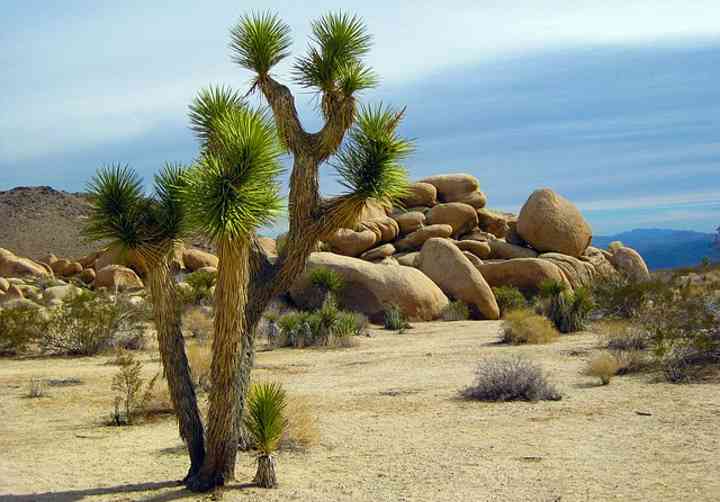
The Joshua tree is an iconic desert plant that is often associated with the Mojave Desert in the arid southwestern United States. This species is actually a type of yucca that is commonly found in the area. One of the distinguishing features of the Joshua tree is its thick, fibrous trunk that divides into thick branches. At the top of each branch, there is a compact clump of spiky, pointed dark-green leaves. These trees can grow up to 49 feet (15 meters) tall and have roots that can extend up to 36 feet (11 meters) in search of water.
In late winter and early spring, the Joshua tree produces clusters of creamy white flowers, adding to its already impressive appearance. There is also a unique variety of the Joshua tree called the Blue Joshua tree, or Yucca brevifolia ‘Blue,’ which is characterized by its blue leaves. This tree is sometimes referred to as the “Sonoran Blue.”
Soapweed Yucca Plant (Yucca glauca)

Soapweed yucca, also known as Yucca glauca, is a small shrubby yucca that grows in deserts. It stands out from other yucca species due to its small leaves and rounded growth habit. This yucca thrives in arid conditions, with its long, slender, pointed leaves and rounded growth pattern as its key identifying features. It has a low-growing desert shrub appearance, reaching a height and width of about 2 feet (0.6 meters).
The soapweed yucca plant produces pale green-white flowers on a 3 ft. (1 m) tall flowering stem when it blooms. It is a different species from Yucca Aloifolia, also known as the Spanish Bayonet, even though it is also referred to as a yucca shrub. The cold-hardy yucca thrives in USDA zones 4-8.
Banana Yucca Plant (Yucca baccata)
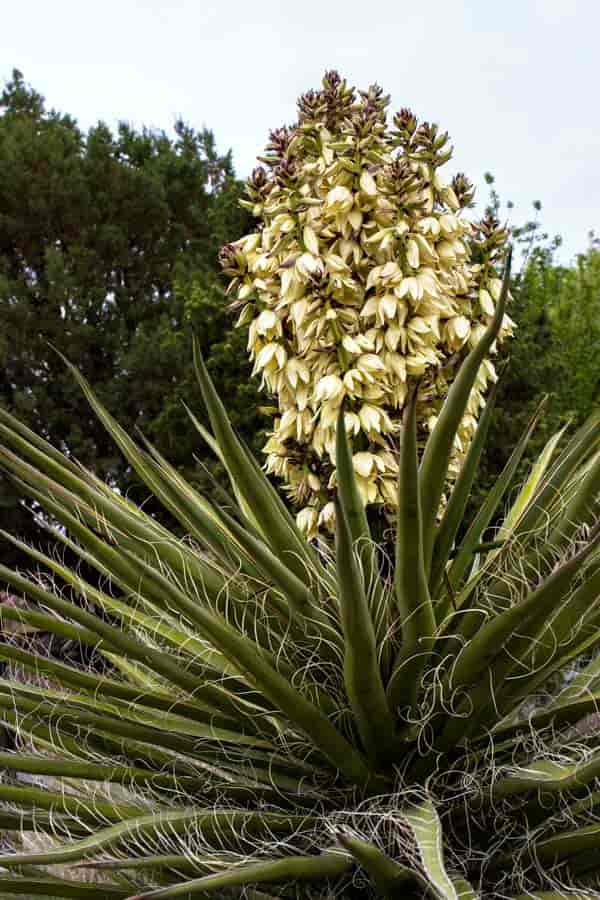
The banana yucca plant is a perennial evergreen shrub that grows in arid deserts in the United States and Mexico. It is named after its banana-shaped fruit. The Yucca baccata has long, thin spiked leaves that grow up to 1-3 feet (0.3-1 meter) in length when the plant reaches 3 feet (1 meter) tall. Unlike other yucca species, the flower stalks of the banana yucca do not grow very tall.
To identify the banana yucca plant, one can look at the fruit it produces. Bananas form after the flowers have faded and the fruit has ripened. The banana yucca grows well in zones 4a through 9a. Another popular yucca in this category is the Mojave yucca, which is similar to the small, spiky shrub.
Mojave Yucca Plant (Yucca schidigera)
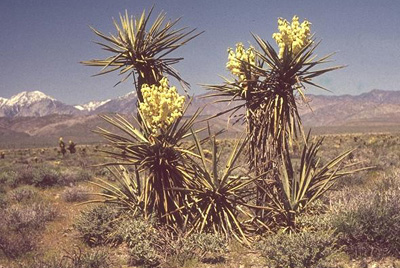
The Mojave yucca is a species of yucca that grows in the desert regions of southern California and surrounding areas. This yucca is a tree-like plant that can grow up to 16 feet (5 meters) tall, and is similar in appearance to the banana yucca shrub.
The Mojave yucca is distinguished by its spiked green crowns and crisp, stiff, yellowish-green or blue-green leaves. In the late spring or early summer, a 4-foot (1.2 m) tall flower stem emerges, bearing a large cluster of bulbous white flowers with a purple tinge. This yucca is well adapted to arid conditions and is often found in desert landscapes.
Beaked Yucca Plant (Yucca rostrata)
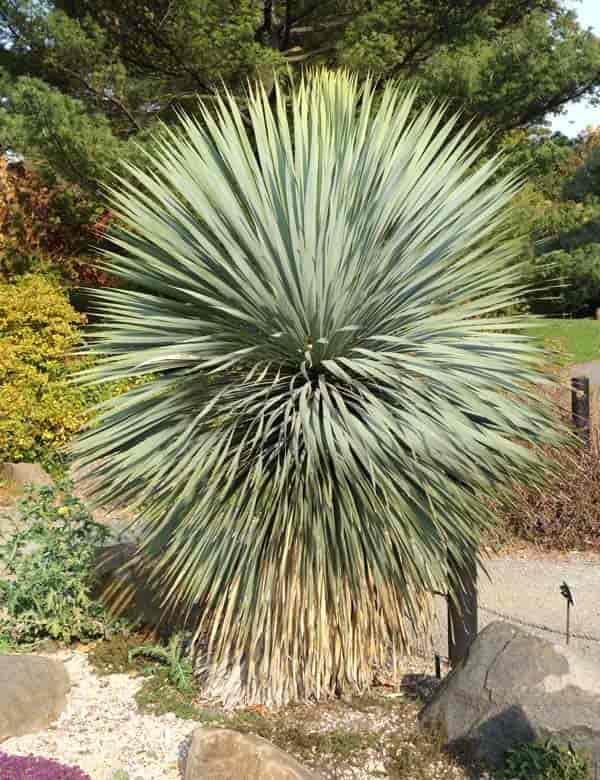
The beaked yucca is a beautiful yucca tree with a single stem that has a stunning display of blue-green leaves, and it is both hardy and cold-resistant. The round pom-pom-shaped crown of foliage is made up of hundreds of tiny pointed thin blades, each of which is around 2 feet (0.6 meters) long. The yucca tree produces a large cluster of white blooms that adds to its ornamental appeal.
This yucca tree can grow up to 6 to 15 feet (1.8 to 4.5 meters) in height and is suitable for USDA zones 5 to 11. The beaked yucca can tolerate temperatures as low as -10°F (-23°C) because of its cold-hardiness. The Yucca rostrata should not be mistaken for the Mexican blue yucca (Yucca rigida). The beaked yucca is more resistant to cold weather than the Yucca rigida, and its leaves are tougher.
Buckley’s Yucca (Yucca constricta)
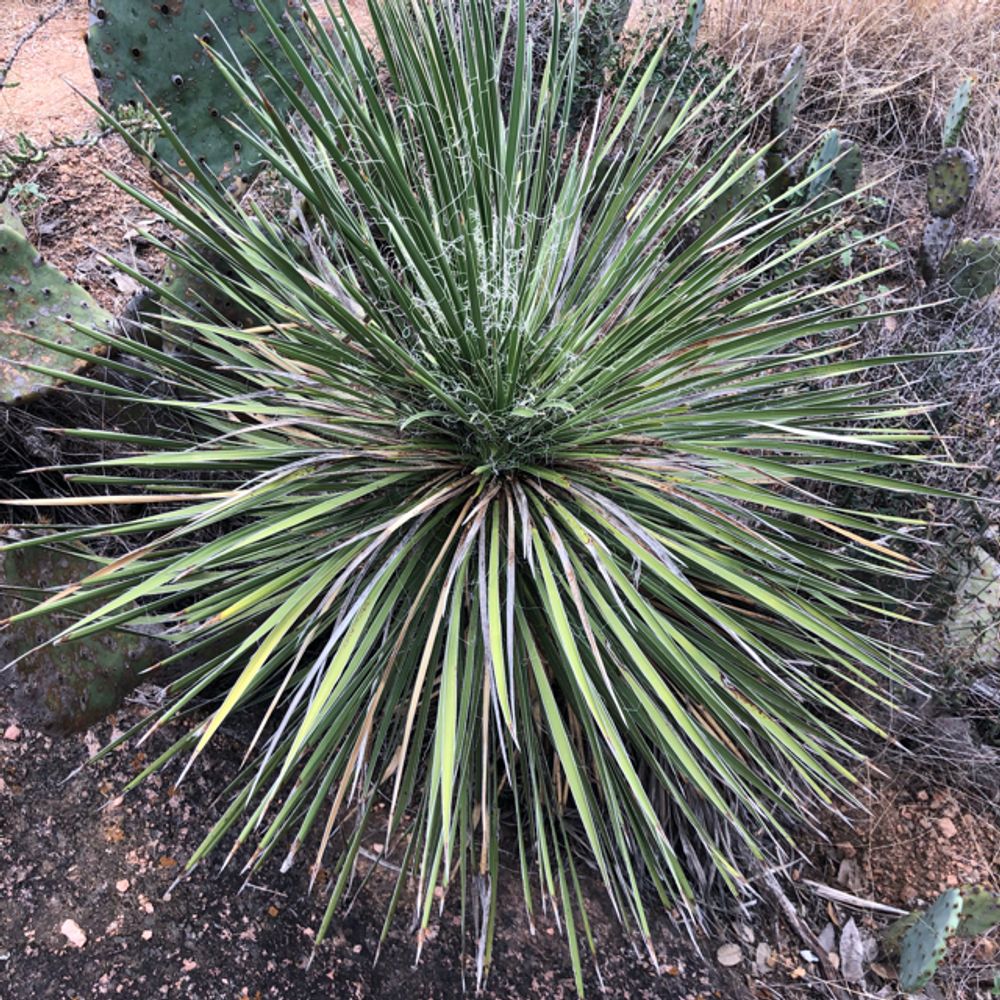
Buckley’s yucca plant is a shrubby evergreen perennial that grows well in hot deserts with rocky, sandy soil, and has no trunks. This yucca species typically forms stemless clusters, ranging in height from 1 to 3 feet (0.3 to 1 meter). The slender, curved leaves of Buckley’s yucca are bluish-green to dark green in color.
Buckley’s yucca is an excellent choice for landscapes with poor, infertile soil. When viewed up close, thread-like filaments can be seen growing between the leaves. In bloom, the center of the plant produces tall flowering panicles that can reach up to 5 feet (1.5 meters) in height.
Twisted Yucca (Yucca rupicola)
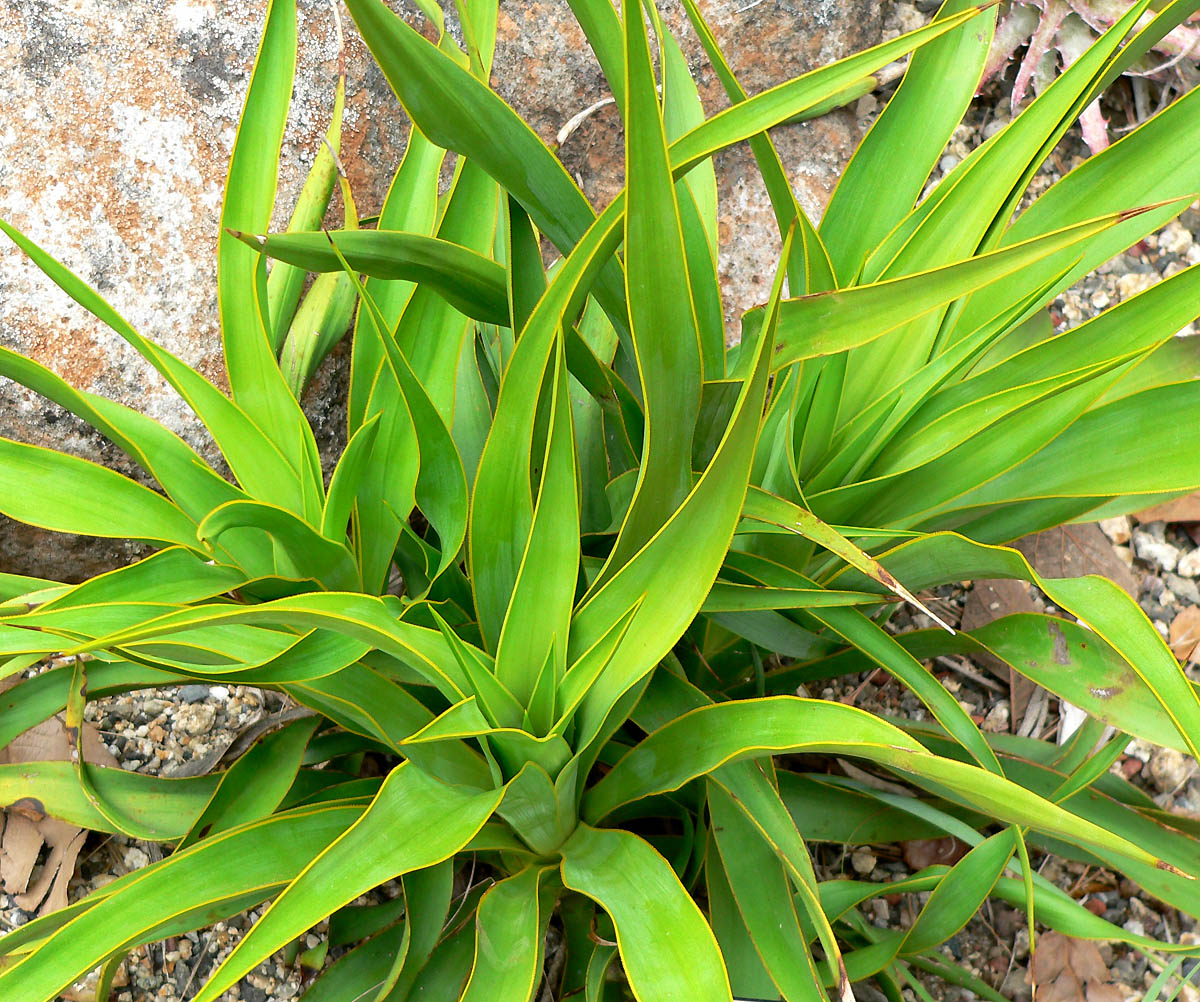
Yucca rupicola, also known as Texas yucca, rock yucca, or twisted-leaf yucca, is a type of plant with long, sword-shaped leaves that range in color from bright green to dark green. It is important to handle this plant with care due to its sharp, pointed leaves that can be similar to other outdoor yucca species.
These yucca plants grow in rosette clusters close to the ground, with lance-shaped leaves that can grow up to 2 feet (0.6 meters) long. As the leaves age, they begin to roll inward. The plant produces a flowering stalk that can reach up to 5 feet (1.5 meters) tall, which produces clusters of white, bell-shaped flowers that droop down, similar to many other yucca species.
Our Lord’s Candle (Yucca whipplei)
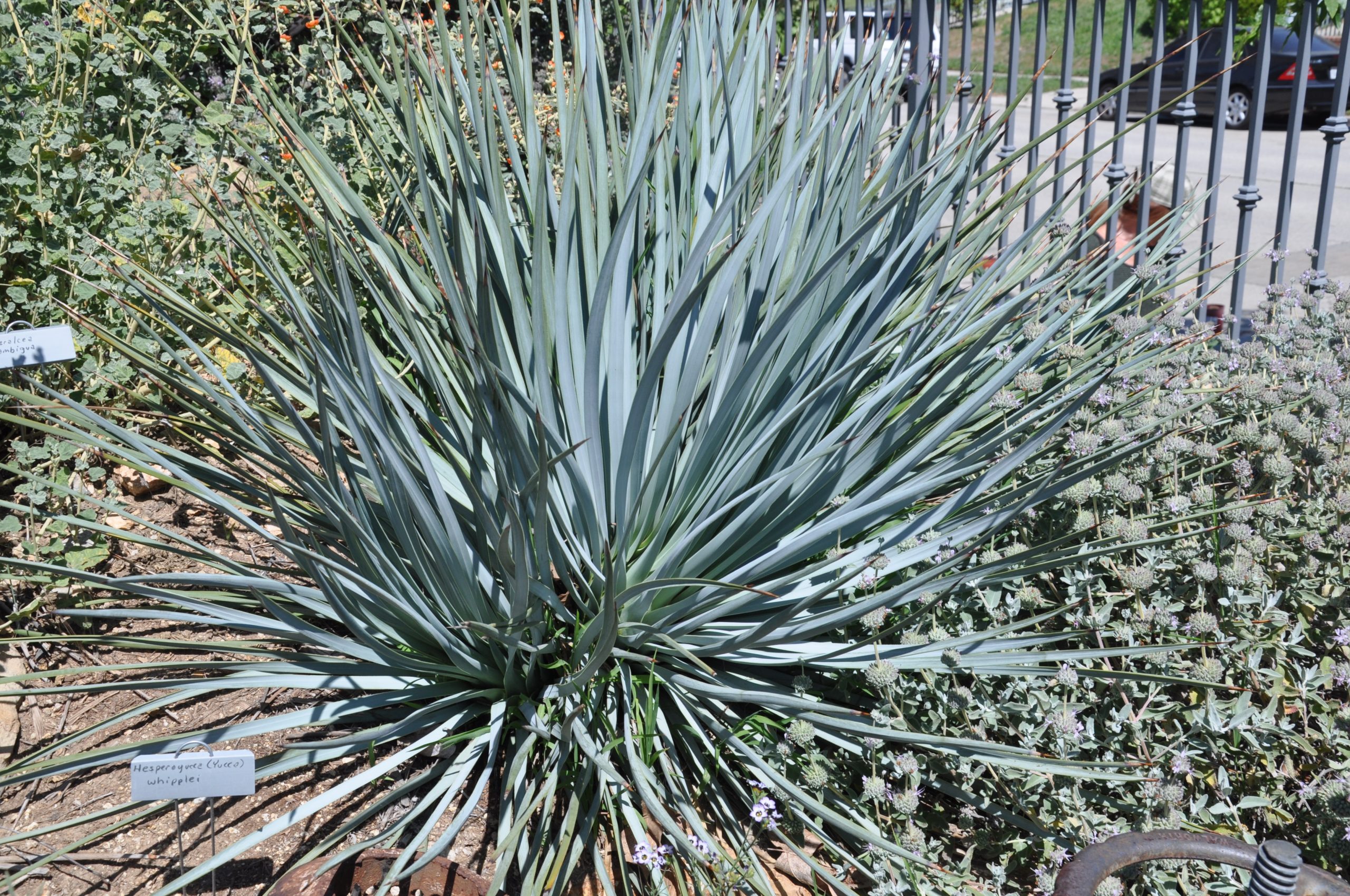
Our Lord’s Candle yucca is a unique type of yucca that grows close to the ground and lacks a noticeable stem. It has blue-green leaves with sharp, serrated edges that can be quite stiff and can grow up to 3 feet (1 meter) in length. The most notable characteristic of this yucca is its towering flower stalk, which can reach up to 14 feet (4.2 meters) tall and produce a mass of fragrant, creamy-white blooms.
In contrast to the Our Lord’s Candle yucca, the Yucca whipplei species typically dies after flowering, though new offsets often emerge from the mother plant. The Our Lord’s Candle yucca can be grown as an accent plant in ornamental gardens, ideally in USDA zones 7-9 and in temperatures as low as 10°F (-12°C).
Yucca elata (Soaptree yucca)

The Soaptree yucca, scientifically known as Yucca elata, is a flowering plant that can be found in the southwestern United States and northern Mexico. This yucca species is characterized by its tall and tree-like appearance, featuring a single trunk and long, spiky leaves forming a crown at the top. It is a drought-tolerant plant that can thrive in dry and arid environments, making it a common ornamental plant for gardens and landscapes.
Aside from its ornamental value, the Soaptree yucca plays an important role in the ecosystem as a food source for various animals such as the yucca moth and the lesser long-nosed bat. The yucca moth is a pollinator for the plant, while the lesser long-nosed bat feeds on the nectar of its flowers.
Yucca pallida (Pale-leaf yucca)

The Pale-leaf yucca, also referred to as Yucca pallida, is a flowering plant belonging to the yucca family. It can be found in the arid environments of the southwestern United States and northern Mexico. The plant has a rosette of long and narrow leaves that are pale green in color, which explains its common name. During the spring and summer seasons, it produces tall stalks of white flowers.
This yucca species is commonly used as an ornamental plant in gardens and landscapes, owing to its striking appearance. In addition, the Pale-leaf yucca plays a vital role in the ecosystem as a food source for various animals such as the yucca moth. The yucca moth feeds on the nectar of the plant’s flowers and, in turn, pollinates them.
Yucca faxoniana (Giant white yucca)
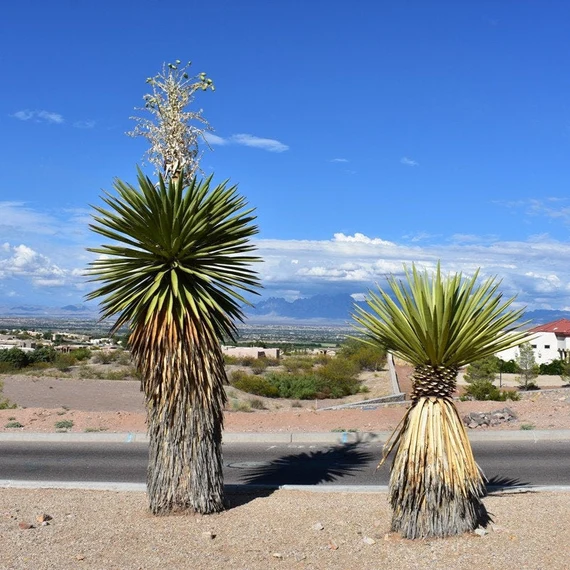
For the Giant White Yucca, it is crucial to plant it in well-draining soil and expose it to plenty of sunlight. Overwatering should be avoided, and the plant should only be watered sparingly when the soil is dry. Occasional fertilization with a balanced fertilizer can also be beneficial for its growth.
Apart from being an attractive addition to gardens and landscapes, the Giant White Yucca plays a vital role in the ecosystem as a source of food for animals. Birds and small mammals consume its flowers and seeds, while the leaves serve as food for yucca moth larvae.
Overall, the Giant White Yucca is a resilient and stunning plant that can add beauty and interest to any outdoor space. Its unique shape and impressive white flowers make it a standout among other plants.
Yucca x schottii (Mountain yucca)
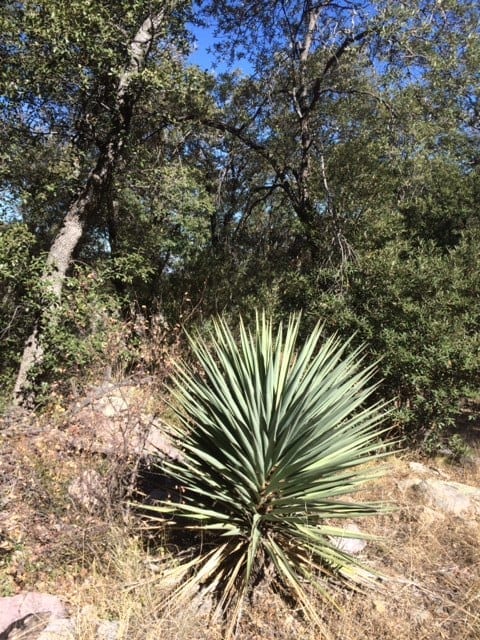
The mountain yucca is an extremely hardy plant that can thrive in a broad range of conditions, including extreme temperatures. It is drought-resistant and requires well-draining soil. Additionally, it does well in full sunlight but can also tolerate partial shade.
When cultivating the mountain yucca, it is critical to plant it in an area where it has sufficient space to grow. It’s also a good idea to use a support stake to help it stay upright as it matures.
Apart from its aesthetic appeal, the mountain yucca is also an important source of food for various animals. Its flowers and seeds are eaten by birds and small mammals, while the yucca moth relies on its leaves for its larvae to feed on.
In conclusion, the mountain yucca is a stunning plant that can add interest to any garden or landscape. Its distinct appearance and exquisite flowers make it stand out among other plants.
Yucca thompsoniana (Thompson’s yucca)
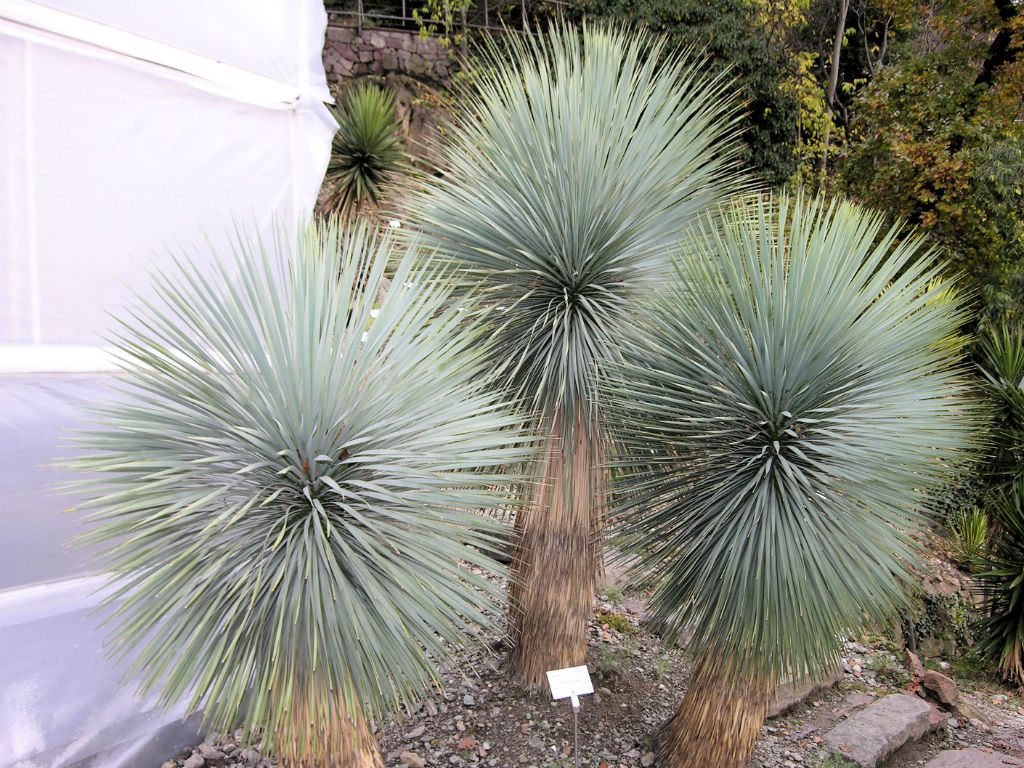
Thompson’s yucca is a plant that requires minimal maintenance and care once it has established itself. It is essential to plant it in well-draining soil and provide it with adequate sunlight. Overwatering should be avoided, and the plant should only be watered when the soil is dry. Fertilization with a balanced fertilizer periodically can also be beneficial for the plant’s growth.
In addition to its ornamental value, Thompson’s yucca is a crucial food source for animals. Its flowers and seeds are consumed by birds and small mammals, while the yucca moth uses its leaves to feed its larvae.
Overall, Thompson’s yucca is an attractive and robust plant that adds diversity to any garden or landscape. Its distinct appearance and striking white flowers make it an eye-catching feature among other plants.
Yucca wipplei (Our lord’s candle)
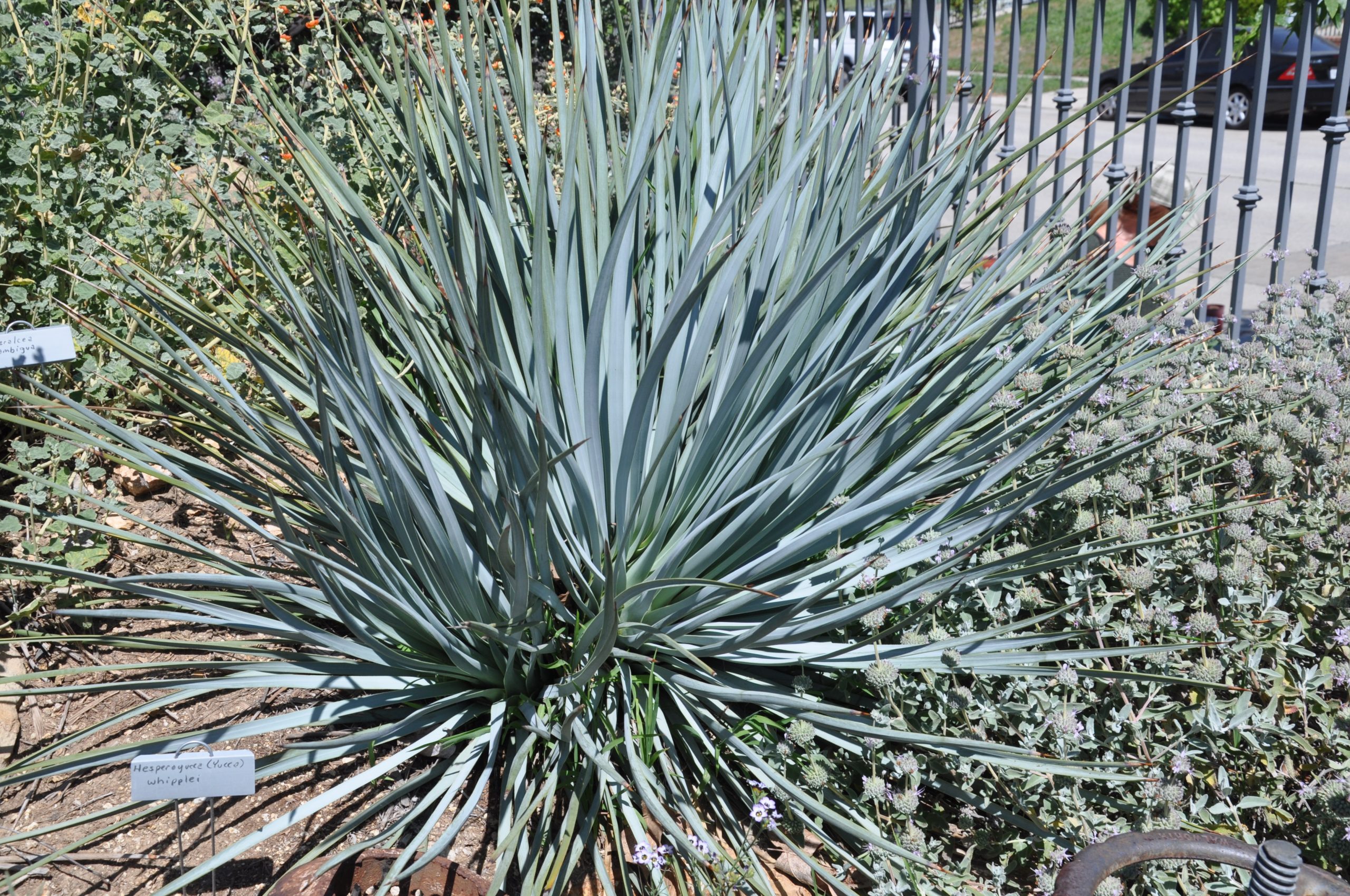
Wipple’s yucca, also known as Yucca wipplei or the whiteflower soapwood yucca, is a type of flowering plant belonging to the yucca family. It can be found in scrubby and woodland habitats in the southwestern United States and northern Mexico. The plant features long, sharp leaves and produces a tall, white flower spike. Although it is relatively easy to grow in its natural habitat, it is challenging to cultivate outside of this area.
In its native range, Yucca wipplei thrives in well-draining soil with ample sunlight. It can withstand extreme temperatures and drought conditions. However, due to its specific growing needs, it is not commonly grown as an ornamental plant outside of its natural range.
Despite its challenging growth conditions, Yucca wipplei serves as a significant food source for animals, including the yucca moth. The plant’s flowers and seeds are consumed by birds and small mammals, while the yucca moth relies on its leaves to feed its larvae.
How to Care for Yucca Plants
Yucca plants, both indoor and outdoor varieties, are excellent low-maintenance plants that require minimal care once they have taken root in the garden or landscape. Here are some tips on how to care for yucca plants:
Soil for yucca plants: Yucca plants thrive in sandy soil with excellent drainage. You can add perlite or small pebbles to enhance water drainage.
Light requirements for yucca plants: Plant yucca trees or shrubs in areas with plenty of sunlight and good air circulation.
Watering yucca plants: For both potted yucca plants and garden yuccas, water them when the soil becomes dry.
Pruning yucca plants: Trim off brown leaves from yucca plants. It is important to wear protective gloves and goggles when pruning outdoor yuccas to avoid getting injured by their sharp blades and spikes.
